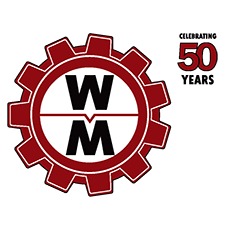Do you run a high-mix low-volume shop? Or do you fabricate custom products? Do you want to end your WIP scheduling hassles? Take a look at Quick Response Manufacturing for an alternative solution. We have outlined the basis of QRM, the advantages you can gain from it, the obstacles involved in implementing it, and more:
What is Quick Response Manufacturing?
Quick Response Manufacturing (QRM) is a strategy that focuses on reducing lead times throughout the entire manufacturing supply chain. QRM has had success because it helps to minimize time spent planning, scheduling, expediting, and shipping work orders (steps that take up more time than the actual labour production times). It aims to reduce internal and external lead times to cut costs, improve production, and clear up WIP. Reduced lead times expedite production and result in lower manufacturing cycle times.
Lean Manufacturing vs Quick Response Manufacturing
Lean gets a lot of attention, but is it the best option for smaller-scale shops? The lean manufacturing model is designed to maximize the flow of production by eliminating production steps that do not add value to the end user. Lean principles can be applied to all kinds of industries but it tends to show significant results for high volume productions.
Click here for an introduction to lean manufacturing.
Quick Response Manufacturing is a model that is designed for small shops that have high-mix low-volume jobs. This process has had success with these types of shops, particularly in the sheet metal fabrication industry.
Reduced Lead Times Give You an Advantage over Competitors
Is your company often worried about losing jobs due to international outsourcing? Quick response manufacturing is designed to tackle this problem head on by cutting manufacturing critical path time (MCT) and cutting unnecessary expenses. Reduced lead times allow you to save time and money and offer competitively priced products with faster turn-around times. QRM often cuts cycle times by 50-90%. If your products reach your customers faster and at a better price point then you eliminate the outsourcing option.
3 Roadblocks to Adopting Quick Response Manufacturing
1) Employee Onboarding
QRM isn’t a simple process to implement. It will require a team effort from shop floor workers, managers, office staff, and owners. And it means you need to change the way you think about production and change the way you communicate with your employees.
2) Changing Your Mindset
An obstacle that most managers face is that adopting QRM means machines can sit idle for periods of time. QRM challenges the idea of “keeping the machines running”. Parts travel through the process and exit the line rather than pile up due to the “keep the machine running” mentality. By constantly producing parts you can create bottlenecks that in turn slow down production and lower your profits. Many shops have found that by following QRM, machines may be used infrequently but production speeds have improved, turnaround times are much faster, and revenues are higher.
3) Switch Over and Initial Investment
Implementing Quick Response Manufacturing may require purchasing new machinery or re-arranging existing machines. Shops that engage in QRM can actually see an ROI faster from using a machine less frequently than with continuous use. Switching to Quick Response Manufacturing also has benefits for your machinery.
QRM Is Easier on Your Machines
Investing in fabrication machinery is important; you want to keep your machines in great shape and see a return on investment as quickly as possible. With QRM your machines can run less frequently and give you more time to run preventative maintenance work. This makes it more affordable to invest in newer technology and it helps lengthen the lifespan of your machines.
Interested in applying QRM to your shop? You can pick up the book: It’s About Time: The Competitive Advantage of Quick Response Manufacturing by Rajan Suri to learn more.

